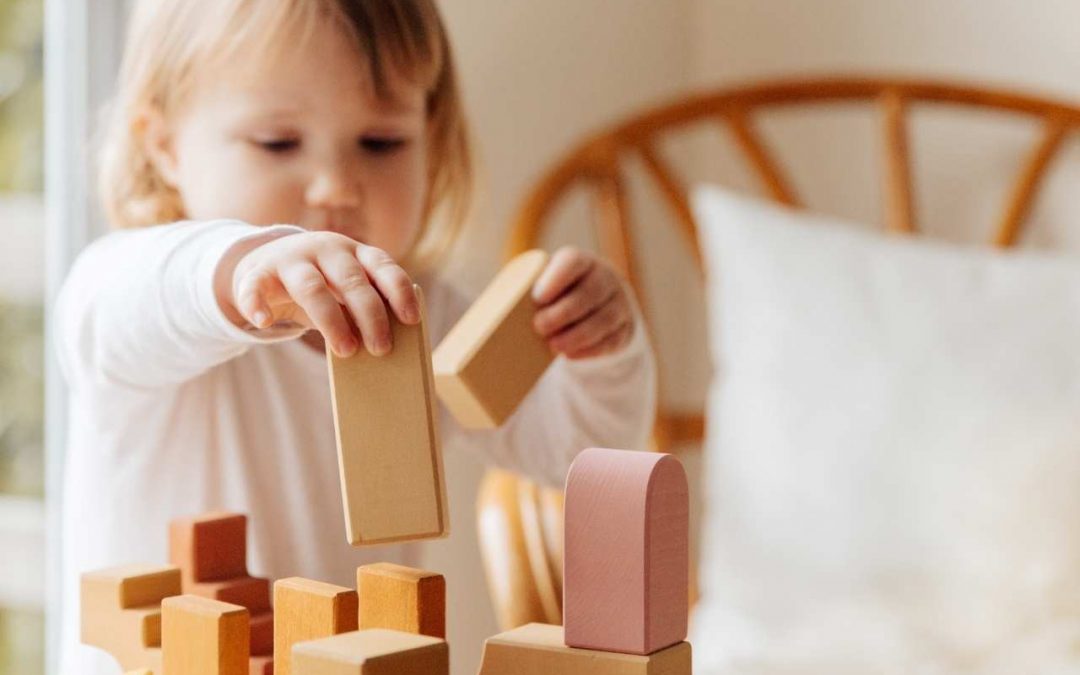There’s a reason we talk about making ‘sense’ of the world. It’s because we use our senses – taste, touch, smell, sight and hearing – to explore, decipher and manoeuvre around our environment. Proprioception (commonly known as body awareness) and balance are two other ‘senses’ that generally get less attention, but are no less important.
When our senses are engaged, we’re more likely to learn new information and we’re more likely to retain it.
That’s why when it comes to early learning and development, sensory play fulfils such a critical role in a child’s healthy development. Sensory play builds nerve connections in the brain’s pathways and strengthens its synapses – and these synapses are pruned and shaped depending on our life experiences.
What is Sensory Play?
Sensory play is when a child actively uses their senses to explore and engage with their world.
Picture a baby cuddling a soft toy or a toddler squishing play-doh in their hands. Imagine a child messing about in a patch of mud with leaves and sticks or a fussy eater making patterns with wet spaghetti. These are all examples of sensory play which helps to develop a child’s sensory processing capabilities.
Why is Sensory Play So Important?
As mentioned earlier, sensory play is crucial for brain development. It helps build a child’s cognitive, linguistic, visual, spatial, problem-solving, gross motor, social and emotional skills – and as the connections in their young brains develop, their ability to accomplish more complex tasks increases.
As adults, we’ve generally learned how to ‘tune-out’ of the myriad things going on around us to focus on a particular task or activity. We’re able to have a conversation with someone when we’re surrounded by lots of different noises, movement, smells etc or work effectively on a computer despite a busy office environment. For a child however, blocking out conflicting inputs can be challenging.
Because sensory play helps a child to process and respond to sensory information, it can be extremely effective in helping to calm an anxious or angry child, ease their frustrations and enable them to block out various stimuli so that they can concentrate better.
When a child uses several of their senses to do an activity or complete a task, they get a broader learning experience and will retain a greater amount of information. Sensory play also helps build their observational skills and abstract thinking and encourages a child to explore and discover through experimenting.
Examples of Sensory Play
Sensory play isn’t something that a child will only do when there’s an education professional involved ie at childcare or at an early learning centre. There are so many things you can do at home and in your everyday life that will stimulate your child’s senses. And remember, messy is good!
Here are some examples of sensory play at home:
- Playing with play-doh or fondant
- Collecting different types of leaves from around the garden and glueing them onto a tree drawn on paper or card. Different smells from the various plants, textures and colours will stimulate their senses, while crushing dead leaves will introduce different sounds.
- Putting spaghetti through the holes of a colander or threading uncooked penne pasta onto a pipe cleaner or a length of wool
- Putting blocks of ice in a bowl and letting your child experience different temperatures and textures
- Baking biscuits or bread
- Playing the ‘drums’ with different pots and pans, using different utensils as drumsticks
There’s no right or wrong and sensory play activities don’t have to be complicated or lengthy. They just have to be fun! Most often, you can use things that you already have around the home or in the garden. And yes, it can get messy, but when you provide opportunities for your child to engage their senses and actively encourage a ‘hands-on, hands-in’ experience, you’ll be giving them the very best chance at healthy development and setting the foundation for lifelong learning.
Simone O’Brien owns Treasured Tots Early Education which operates three highly successful childcare centres in Perth, Western Australia. She has been in the childcare industry for 14 years and has established Treasured Tots as the benchmark for quality childcare in Perth. Simone qualified with a Diploma in Children’s Services and worked in childcare for a couple of years before recognising a dire need for childcare that offered families a loving, nurturing, supportive and warm ‘home away from home’. This prompted her to open her first childcare centre in Perth in 2011 at only 22 years of age. Treasured Tots now has three childcare centres in Mandurah, Bibra Lake and Fremantle. Simone is an active member of the Australian Child Care Alliance (ACA), a not-for-profit, member-funded organisation which advocates for the future of Australia’s children.




